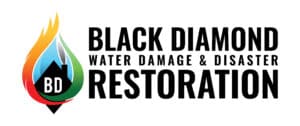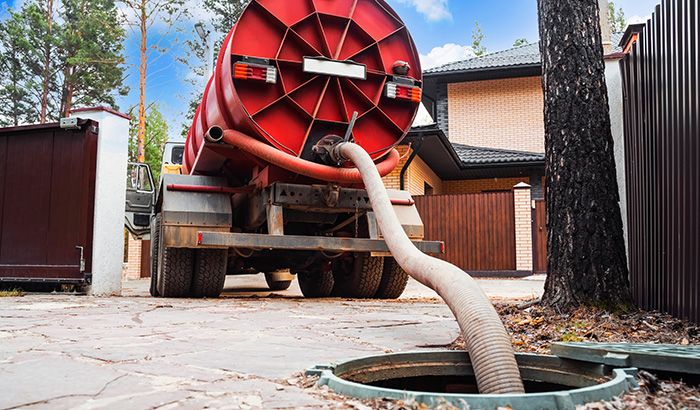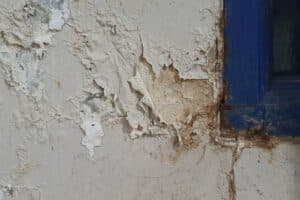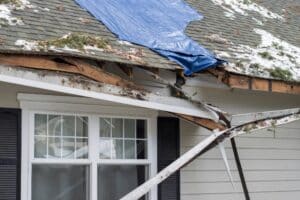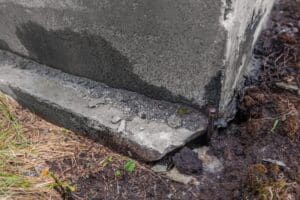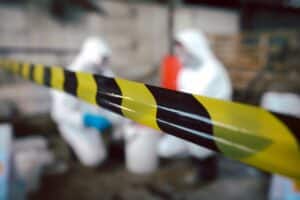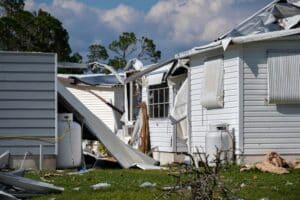Sewage damage refers to the destruction caused by the overflow or backup of sewage within a property. It can occur for various reasons, such as clogged sewer lines, heavy rainfall overwhelming the sewage system, or structural issues in the plumbing. When sewage backs up into a building, it poses significant health hazards and requires immediate attention.
Damage from sewage can lead to extensive destruction of property, including floors, walls, furniture, and belongings. The contaminated water contains harmful bacteria, viruses, and other pathogens that can cause serious illnesses if exposed to or ingested.
If you experience damage from sewage in your home or business, it is crucial to take immediate action to mitigate the situation and prevent further harm, which is why in this article, we will explore everything you need to know about sewage damage and why you should leave the restoration process to a professional.
Let’s get started with the common things you should be aware of when it comes to sewage damage:
- Causes of Sewage Damage: Sewage damage can occur for various reasons, including aging sewer systems with deteriorating pipes that may crack, collapse, or become misaligned.
Tree root intrusion is another common cause, where tree roots penetrate sewer lines in their search for water and nutrients. Additionally, excessive grease, fat, or oil buildup in pipes can lead to clogs, preventing proper wastewater flow.
- Health Risks: Sewage contains a plethora of harmful pathogens, such as bacteria (e.g., E. coli, Salmonella), viruses (e.g., hepatitis A, norovirus), and parasites (e.g., Cryptosporidium, Giardia). Direct or indirect contact with sewage-contaminated water can result in severe health issues like gastroenteritis, diarrhea, vomiting, hepatitis, and cholera. Inhalation of sewage fumes can cause respiratory problems.
- Contamination Spreading: When sewage overflows or leaks from sewer lines or septic tanks, it can rapidly contaminate surrounding areas. If the sewage is not contained promptly, it can infiltrate the soil, nearby water sources and even enter nearby buildings through cracks or drains, exacerbating the damage.
- Foul Odors: Sewage damage emits a highly unpleasant odor due to decomposing organic matter and releasing volatile gases like hydrogen sulfide. The smell can persist long after the initial incident, making affected areas highly uncomfortable and unlivable.
- Mold Growth: Sewage damage creates a damp and humid environment ideal for mold growth. Mold spores thrive in these conditions and can spread throughout the property, causing health problems like allergies, respiratory issues, and skin irritation. It can also damage building materials, leading to costly repairs.
- Structural Damage: Prolonged exposure to sewage water can damage a building’s structural integrity. If sewage infiltrates building foundations, walls, or floors, it can weaken materials like wood, drywall, and concrete. Wooden components may rot, and metal structures may corrode, jeopardizing the stability of the entire structure.
- Electrical Hazards: Sewage water conducts electricity, creating electrical hazards in affected areas. Electrical systems and appliances exposed to sewage can become dangerous and cause electrical shocks or fires, seriously threatening occupants and restoration workers.
- Debris and Waste: Damage from sewage brings along debris, solid waste, and foreign objects that can complicate the cleanup process. Removing these items from contaminated areas is crucial to prevent further blockages or contamination.
- Professional Cleanup: Sewage damage cleanup requires specialized knowledge, training, and equipment. Trained professionals wear appropriate personal protective equipment (PPE) like gloves, masks, goggles, and waterproof clothing to prevent exposure to hazardous materials.
- Personal Protective Equipment (PPE): PPE is essential during sewage damage cleanup to minimize the risk of direct contact with contaminated water and pathogens. Inadequate protection can result in serious infections or illnesses.
- Disinfection Process: Disinfection involves using industrial-strength cleaning agents and disinfectants to eliminate harmful pathogens. This step is vital to ensure the affected areas are safe for reoccupation.
- Water Extraction: To prevent further damage and contamination, sewage water must be promptly extracted using powerful pumps and industrial-grade vacuums. This process helps minimize the absorption of contaminated water into building materials.
- Drying and Dehumidification: After water extraction, thorough drying and dehumidification are necessary to reduce moisture levels. Proper airflow and specialized equipment like dehumidifiers and air movers are crucial to prevent mold growth.
- Air Filtration: Air scrubbers and filters are employed during sewage damage cleanup to remove airborne contaminants, including mold spores and harmful particles. This improves indoor air quality and reduces the risk of respiratory issues.
- Restoration vs. Replacement: Restoration experts assess the extent of damage to determine whether materials and belongings can be salvaged through cleaning and restoration or need to be replaced. Salvaging materials can help reduce overall costs.
- Insurance Coverage: Whether homeowner’s insurance covers sewage damage depends on the policy and the cause of the damage. Reviewing and understanding insurance coverage to determine the extent of financial assistance available is essential.
- Preventative Measures: Regular sewer lines, septic systems, and plumbing maintenance are critical in preventing sewage damage. This includes periodic inspections, cleaning of pipes, and avoiding flushing non-biodegradable items down toilets and sinks.
- Temporary Relocation: In severe sewage damage cases, temporary relocation might be necessary, especially if the property becomes unsafe for occupancy. This ensures the safety and well-being of occupants during the cleanup and restoration process.
- Legal Regulations: Sewage damage cleanup is subject to local health and environmental regulations. Professional cleanup companies must adhere to these guidelines to properly dispose of contaminated materials and minimize environmental impact.
- Post-Cleanup Inspection: After sewage damage cleanup, a thorough inspection is conducted to verify that all contamination has been eradicated and that the property is safe for reoccupation. This step ensures that the restoration process was successful in mitigating risks.
Remember that sewage damage poses serious health risks, so leaving the cleanup and restoration to qualified professionals is crucial. A timely and proper response can minimize the damage and help ensure the safety and well-being of you and your family or employees.
Now, why leave it to a professional?
There are several excellent reasons why sewage damage restoration should be left to a professional, including:
- Expertise and Experience: Professional restoration technicians have the knowledge and experience to accurately assess the extent of sewage damage. They know how to identify hidden areas of contamination and apply appropriate cleanup and disinfection methods.
- Specialized Equipment: Sewage damage restoration requires specialized water extraction, drying, and decontamination equipment. Professional restoration companies possess high-powered pumps, industrial-grade dehumidifiers, and advanced sanitizing agents that are not readily available to the general public.
- Proper Disposal: Handling and disposing of contaminated materials correctly is critical in the restoration of sewage damage. Professionals know how to safely dispose of contaminated items, preventing the further spread of pathogens and environmental contamination.
- Preventing Mold Growth: Sewage damage often leads to excess moisture, creating an ideal environment for mold growth. Professional restoration teams understand the importance of thorough drying and dehumidification to prevent mold infestations.
- Structural Integrity: In cases of severe sewage damage, the structural integrity of a building can be compromised. Professionals can identify and address structural issues to ensure the safety and stability of the property.
- Odor Removal: Sewage damage can leave persistent foul odors that are challenging to eliminate. Restoration experts use specialized techniques and deodorizers to remove these unpleasant smells effectively.
- Time Efficiency: Professional restoration teams are well-equipped to respond quickly to sewage damage emergencies. Timely restoration is essential to minimize damage and prevent further health risks.
- Insurance Claims: Working with a professional restoration company can simplify the insurance claims process. They can provide detailed documentation of the damage, restoration efforts, and costs, facilitating a smoother claims process.
- Compliance with Regulations: Sewage damage restoration often involves handling hazardous materials, which may be subject to local regulations and disposal guidelines. Professionals are knowledgeable about compliance requirements, ensuring that the restoration process adheres to the necessary standards.
- Comprehensive Restoration: Professional restoration services offer a holistic approach to sewage damage cleanup and restoration. They address visible damage and potential hidden issues, ensuring a thorough and complete restoration of the affected areas.
- Peace of Mind: Dealing with sewage damage can be overwhelming and stressful. Hiring professionals lets you focus on your family’s or employees’ well-being while knowing that the restoration process is in capable hands.
Sewage damage restoration is a complex and hazardous process that requires professional restoration technicians’ expertise, specialized equipment, and experience. Choosing professionals ensures that the restoration is carried out safely, efficiently, and comprehensively, protecting the health of occupants and preserving the integrity of the property.
Black Diamond Restoration Can Help
When faced with sewage damage, time is of the essence. Delaying the restoration process can lead to further complications and increased costs. That’s why we urge you to contact Black Diamond Restoration immediately. Our quick response, professional expertise, and commitment to quality restoration services make us the top choice for property owners in the greater Salt Lake and Utah Valley areas.
Don’t let sewage damage disrupt your life or jeopardize your property. Trust Black Diamond Restoration to handle the restoration process with efficiency, care, and precision. Contact Black Diamond Restoration today and let us restore your property to its safe and habitable state.
toto slot